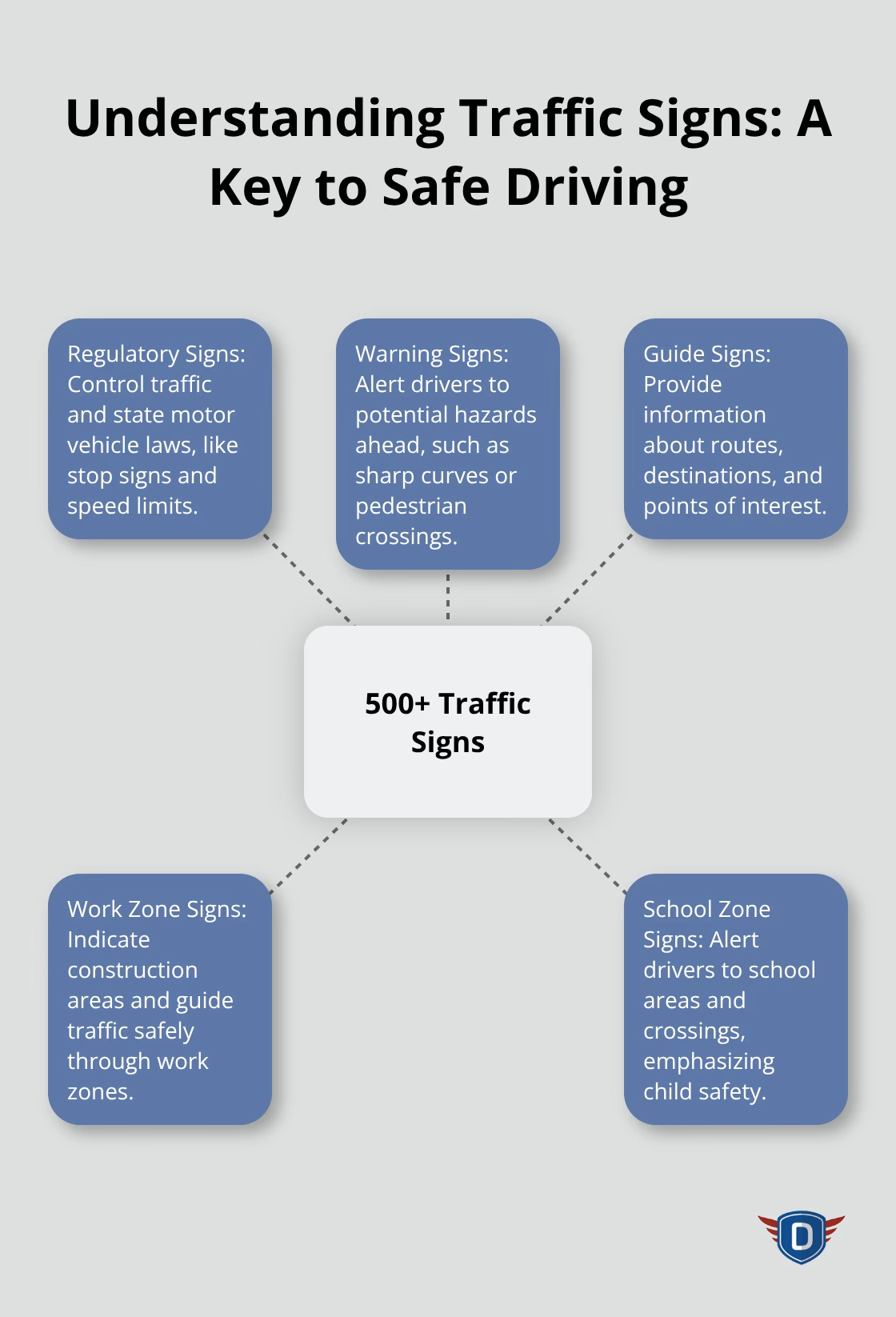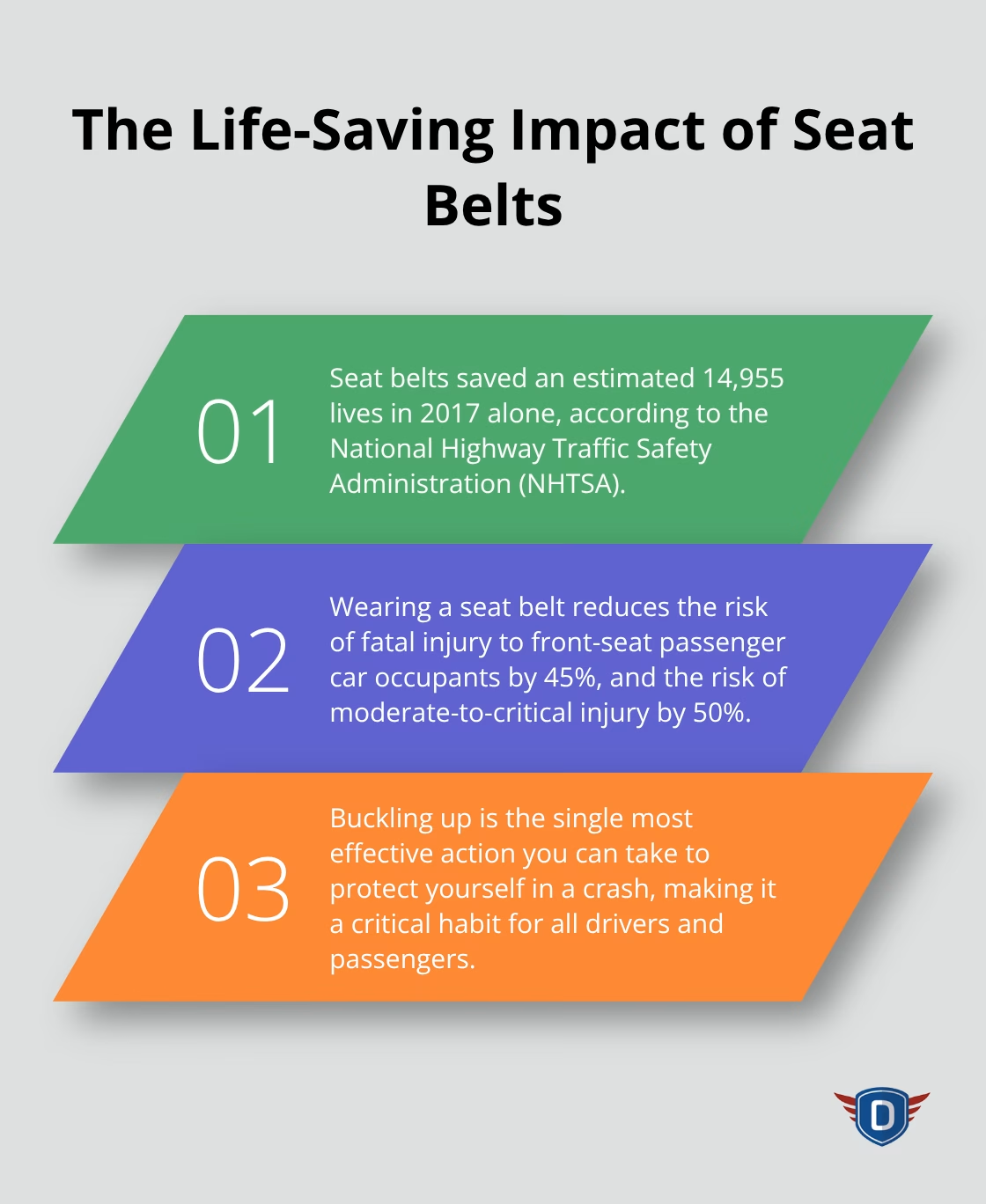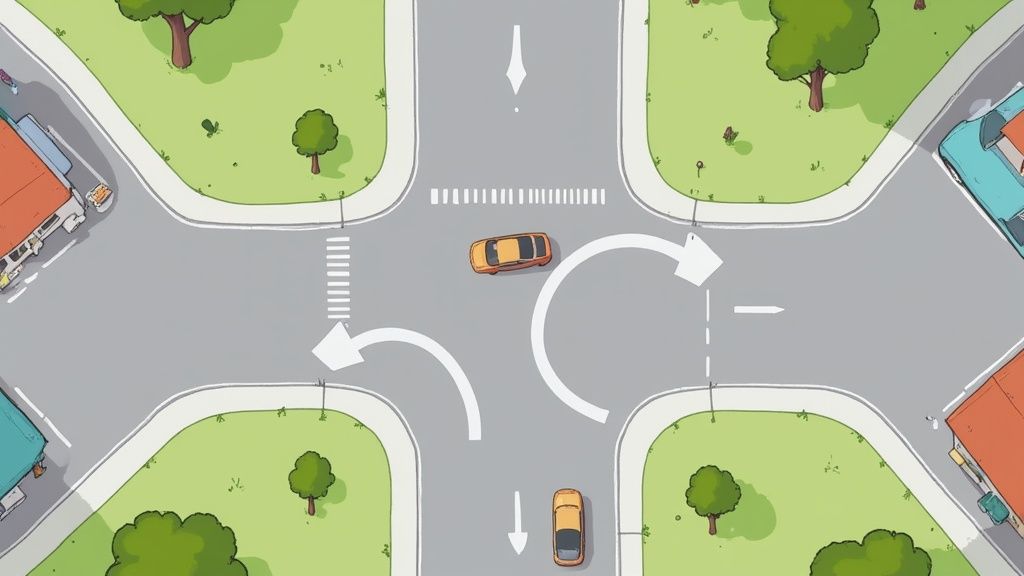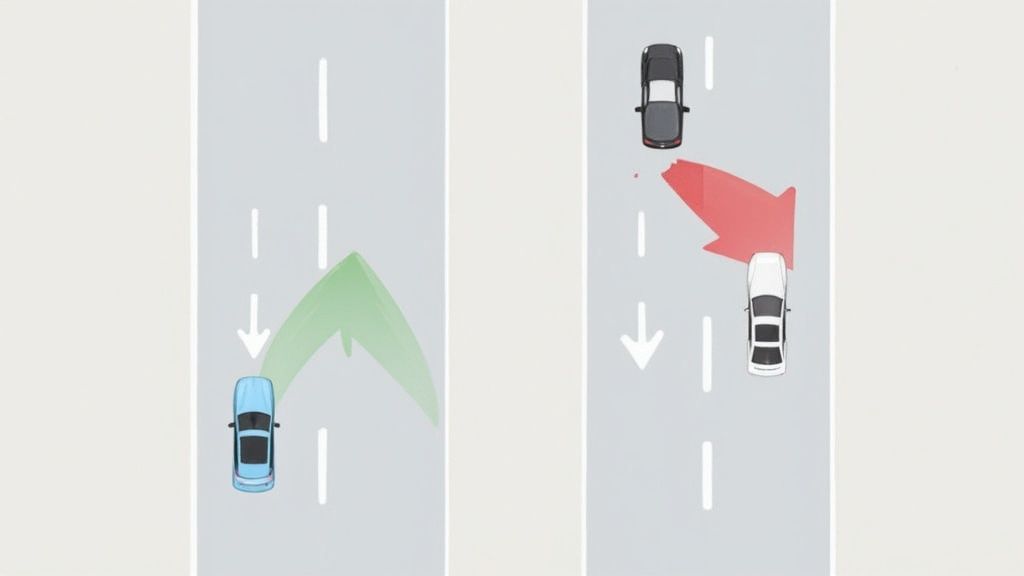Embarking on your driving journey can be both exciting and overwhelming. At DriverEducators.com, we understand the challenges new drivers face when starting out.
This guide covers everything you need to know as a first-time driver, from mastering vehicle controls to navigating the license process. We’ll also explore our new DETS drivers’ ed for first-time drivers, designed to give you a solid foundation for safe and confident driving.
How to Master the Basics of Driving
Vehicle Controls: Your Command Center
As a first-time driver, you must understand the fundamentals. The journey starts with your car’s controls. Sit in the driver’s seat and locate all essential components. Adjust your mirrors and seat position for optimal visibility and comfort. Practice using the turn signals, windshield wipers, and headlights until you can operate them without thinking. The National Highway Traffic Safety Administration reports that proper use of these controls can significantly reduce your risk of accidents.
Decoding the Road’s Language
Traffic signs and road markings silently communicate critical information. They inform you about speed limits, potential hazards, and traffic flow. The Manual on Uniform Traffic Control Devices (MUTCD) lists over 500 different traffic signs in use across the United States. Study these signs and their meanings. Pay special attention to regulatory signs (stop signs and yield signs) and warning signs (sharp curve ahead or pedestrian crossing).

Navigating the Right-of-Way Dance
Right-of-way rules determine who goes first in various situations. At a four-way stop, the vehicle that arrived first has the right-of-way. If two vehicles arrive simultaneously, the one on the right goes first. The Insurance Institute for Highway Safety reports that failure to yield right-of-way contributes to about 7.4% of fatal crashes. Always prioritize caution if you’re unsure who has the right-of-way.
Perfecting Basic Maneuvers
Mastering basic driving maneuvers requires practice. For turning, maintain a steady speed and use your turn signals at least 100 feet before the turn. Practice parking in empty lots before attempting busier areas. When merging onto highways, match your speed to the flow of traffic and look for gaps. The Federal Highway Administration recommends accelerating to highway speed on the entrance ramp to merge smoothly.
Continuous Learning and Practice
Becoming proficient at these basics takes time and dedication. Many driving schools offer hands-on guidance to help you master these skills efficiently and safely. With patience and persistence, you’ll soon navigate the roads with confidence. As you progress in your driving journey, you’ll need to focus on essential safety practices. Let’s explore these critical aspects in the next section.
How Can New Drivers Stay Safe on the Road?
The Life-Saving Power of Seat Belts
Safety should be the top priority for all drivers, especially those new to the road. The National Highway Traffic Safety Administration (NHTSA) reports that inexperienced drivers face a higher risk of accidents. Seat belts play a critical role in driver safety. The NHTSA estimates that seat belts saved an estimated 14,955 lives in 2017 alone. Always fasten your seat belt before you start the engine, and make sure all passengers do the same. This simple action not only helps you avoid a ticket but also protects your life.

Maintain a Safe Following Distance
Tailgating often leads to accidents. The three-second rule provides a good starting point for maintaining a safe distance. To apply this rule, choose a fixed object ahead and count the seconds it takes you to reach it after the car in front passes it. Under ideal conditions, you should maintain at least a three-second gap. In poor weather or at higher speeds, increase this to five or six seconds.
Eliminate Distractions
Distracted driving claimed 3,275 lives in 2023. To stay safe, put your phone away, set your GPS before you start driving, and avoid eating or applying makeup while behind the wheel. If you need to do anything that takes your attention off the road, pull over to a safe location first. Creating a calm cabin environment can help you stay focused on the road.
Adapt to Weather Conditions
Different weather conditions require different driving techniques. In rain, reduce your speed and increase your following distance. For snow or ice, equip your car with winter tires and practice gentle acceleration and braking. When driving in fog, use your low beam headlights and significantly reduce your speed. Learning how to drive safely in the rain is essential for new drivers.
Continuous Learning and Practice
Safety practices form the core of all reputable driving courses. Professional instructors provide hands-on guidance to help new drivers internalize these habits, ensuring they become second nature with more road experience. As you progress in your driving journey, you’ll need to navigate the driver’s license process. Let’s explore the steps involved in obtaining your license in the next section.
How to Get Your Driver’s License
Obtain Your Learner’s Permit
The journey to your driver’s license starts with a learner’s permit. Requirements vary by state, but you’ll typically need to:
- Meet the minimum age requirement (usually 15 or 16)
- Pass a written knowledge test
- Provide proof of identity, residency, and legal presence
- Pass a vision test
- Pay the required fees
The knowledge test covers traffic laws, road signs, and safe driving practices. The American Association of Motor Vehicle Administrators reports an average pass rate of about 50% for first-time test takers. Don’t worry if you don’t succeed on your first attempt – many states allow retakes after a short waiting period.

Complete Driver’s Education
Most states require new drivers to finish a driver’s education course. These courses usually include classroom instruction and behind-the-wheel training.
When you select a driver’s education program, look for:
- A comprehensive curriculum that covers all driving aspects
- Experienced, certified instructors
- Flexible scheduling options
- A good balance of classroom and practical instruction
Practice Real-World Driving
After you receive your learner’s permit, it’s time to practice. Most states require a minimum number of supervised driving hours before you can take your road test. The Insurance Institute for Highway Safety suggests supervised driving hours for new drivers.
During your practice sessions:
- Start in areas with low traffic and gradually move to more challenging conditions
- Practice in various weather conditions and times of day
- Focus on developing good habits, not just passing the test
Prepare for Your Road Test
The final step is the road test. To prepare effectively:
- Review your state’s driver’s manual thoroughly
- Practice common test maneuvers (parallel parking, three-point turns)
- Familiarize yourself with the test route if possible
- Ensure your vehicle functions properly
On the day of your test, arrive early, bring all required documents, and stay calm. The examiner wants to see that you can drive safely and confidently.
Choose a Quality Driving School
Selecting the right driving school can significantly impact your learning experience. DriverEducators.com stands out as a top choice, offering comprehensive driver education programs. Our certified instructors provide personalized guidance, ensuring you master the necessary skills for safe driving. We focus on creating a supportive learning environment that helps students not only meet course requirements but also develop lifelong safe driving habits.
Final Thoughts
Becoming a skilled driver requires ongoing practice and learning. You must understand vehicle controls, road signs, right-of-way rules, and basic maneuvers. Safety practices like wearing seat belts, maintaining safe distances, and avoiding distractions will protect you on the road. The journey from learner’s permit to full license involves several steps, including driver’s education and supervised practice.
Continuous improvement of your driving skills is essential, even after obtaining your license. You should stay updated on traffic laws and safety practices to become a more confident driver. Every time you drive provides an opportunity to enhance your abilities and become a safer road user.
We at DriverEducators.com offer comprehensive driver education programs, including our new DETS drivers’ ed for first-time drivers. Our certified instructors provide personalized guidance to help you develop safe driving habits. With dedication and the right resources (like our program), you’ll master the art of driving and enjoy safe experiences on the road.





